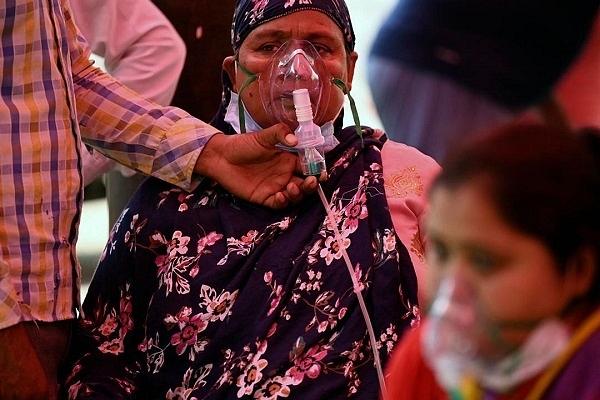
Explained: Why Pandemics Come In Waves And The Reasons Behind A Deadlier COVID-19 Second Wave
The second wave of the COVID-19 pandemic is posing a challenge to India. Yesterday, India became the first country in the world to surpass the four lakh new cases per day mark.
The Total Positivity Rate (TPR) for the second wave is 18.5 per cent, almost double of the peak TPR of the first wave in 2020. According to data from hospitals being tracked by the government, 54.5 per cent patients admitted during the second wave required supplemental oxygen, a 13.4-percentage-point increase from last year’s peak.
At the same time, close to 17 lakh COVID-19 tests are performed per day. A total of 27.62 crore samples have been tested in the country since the beginning of the pandemic last year. Around 30 lakh vaccine doses are being administered per day currently.
Using a mathematical model devised by IIT, scientists predict that the second-wave of COVID-19 could peak mid-May with 33-35 lakh total 'active' cases, and afterwards, the infections may see a steep decline by the end of May.
Why second wave is much more devastating
It is not uncommon for the second waves of viral pandemics to be more devastating than the first ones. The 1918 Spanish flu, the deadliest pandemic in history, also had a more devastating second wave (partially due to largescale troop movement during World War 1).
The researchers have noted various mechanisms behind this wave-phenomena in the flu pandemics - virus mutation which cause increased transmissibility or delayed susceptibility of individuals; behavioral changes; population heterogeneity where each wave spreads through one sub-population; waning immunity; etc.
The union government recently told Madras High Court that the surge in numbers was unexpected. The disease curve was flattening till December 2020, everything was fine by January 2021 and that preparatory measures had been taken for quite some time.
India saw saw a major dip in the cases in the months of January and early February. The vaccines had also been rolled out. This made both people and the government lackadaisical.
Meanwhile, the media focus had also shifted to fast economic recovery and the upcoming assembly elections. The general feeling was that strict movement restrictions would be too costly in terms of economic recovery, and that the worst was already over.
The continued opening of the economy coincided with a drop in the case numbers, and despite increased mobility, new cases didn’t rise, reinforcing the feeling. The government priorities shifted, even as people were asked to maintain social distancing and wear masks etc.
The emergency measures including the dedicated volunteer networks, special COVID-19 facilities were scaled back. A lower sense of urgency also affected the pace of vaccination campaign. More so, distancing norms were flouted brazenly.
This didn’t change when the cases began to rise.
In hindsight, we should have also invested more in studying the emergence of new variants. New COVID-19 mutants are more infectious. The UK strain has shown a 50 per cent higher transmission; the L452R mutation found in the variant B1.671, first detected in India, too has increased infectivity. We are yet to know more significant details about the mutations and how they interact with tests/medications etc.
Reportedly, there is an overwhelming consensus that COVID-19 is an air-borne infection in addition to being a droplet infection that is spread by coughing or sneezing.
In India, close to 80-85 per cent of the population is asymptomatic - the largest carrier of the virus. They can spread the virus by breathing/talking, especially in indoor settings. This is why a lot of cases with all the family members getting sick are noted.
People became complacent in following the guidelines, and since the micro-containment zones (Ex, only one floor contained, instead of the whole building) were not as effective as containment zones last year, indoor super spreader events increased. Contact tracing guidelines were also not enforced rigorously.
On the other hand, the Election Commission of India has raised concerns against the sensationalism by the media. Experts have also flagged the rumour mongers and naysayers who spread lies about masks, social distancing, vaccines etc. being ineffective.
It is also important to note that the vaccines approved for emergency use in India don’t block the transmission of the virus, but only help to reduce severity of the disease. Therefore, the people who have been vaccinated should continue to follow the COVID-19 guidelines.
Depending on the effectiveness of the vaccination, viral mutations, and herd immunity etc., the possibility of subsequent waves and troughs cannot be ruled out. Sustained changes in personal habits as well as healthcare reforms are required.